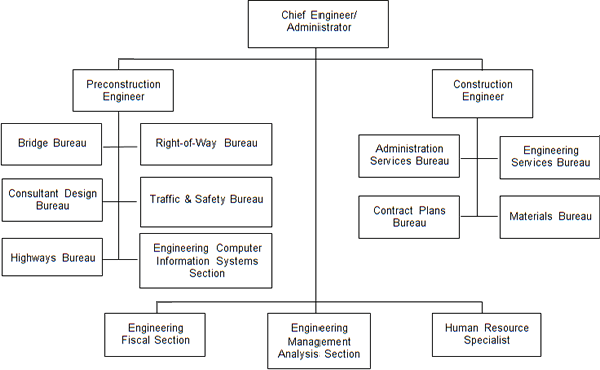
| HOME | SEARCH | ABOUT US | CONTACT US | HELP | ||
| |
| This is an obsolete version of the rule. Please click on the rule number to view the current version. |
|
18.1.101 ORGANIZATIONAL RULE (1) Organization of the Department of Transportation. (a) History. The Department of Transportation was created by Chapter 512 of the Montana Session Laws of 1991 and implemented by executive order no. 11-91 of the Governor on July 1, 1991. (b) Director. The Director of the Department of Transportation, appointed by the Governor, heads the department. The director's duties are specified in 2-15-112, MCA. There are four service staff sections that report directly to the director. The service staff sections are: (i) Civil Rights; (ii) Internal Audit; (iii) Legal Services; and (iv) Public Information Officer. (c) Transportation Commission. The Transportation Commission consists of five members appointed by the Governor for terms specified in 2-15-124, MCA. The powers of the Transportation Commission generally relate to awarding construction contracts and designation of highway routes. The Transportation Commission meets once a month, unless otherwise scheduled. The Transportation Commission exercises some oversight over the Highways and Engineering Division. The Transportation Commission also exercises quasi-judicial powers over outdoor advertising. (d) Board of Aeronautics. The Board of Aeronautics consists of nine members appointed by the Governor for terms specified in 2-15-124, MCA. Further descriptions of the functions of the board are found in Title 67, MCA. The Aeronautics Board exercises some oversight over the Aeronautics Division. (e) Deputy Director. The Deputy Director is responsible for assisting the Director of Transportation. (f) Divisions. The department consists of 13 divisions, each headed by an administrator. All divisions are further divided into bureaus headed by chiefs. (i) Administration Division; (ii) Aeronautics Division; (iii) Highways and Engineering Division; (iv) Human Resources Division; (v) Information Services Division; (vi) Maintenance Division; (vii) Motor Carrier Services Division; (viii) Rail, Transit and Planning Division; (ix) Billings District; (x) Butte District; (xi) Glendive District; (xii) Great Falls District; and (xiii) Missoula District. (2) Functions of Department Divisions. (a) Administration Division. The Administration Division provides administrative support services essential to the operation of the department. The division provides accounting, motor fuel and aviation fuel tax collection, payroll, fiscal programming, purchasing, budgeting, cash management, and inventory control for the department. The division consists of the following bureaus: (i) Accounting Controls Bureau; (ii) Budget & Planning Bureau; and (iii) Fiscal Operations Bureau. (b) Aeronautics Division. The division is responsible for providing for the protection and promotion of safety in aeronautics. The division facilitates the maintenance of airports and the various components of airport infrastructure, including visual and electronic navigational facilities and flying aids. Efforts to foster, promote, and supervise aviation and aviation safety are coordinated through educational efforts and programs, registering aircraft and pilots in accordance with Montana laws and regulations; and coordination and supervision of aerial search and rescue operations. In accordance with the maintenance and safety aspects of the division's overall mission, it administers a loan and grant program to municipal governments to fund airport development and improvement projects. The Montana Aeronautics Division consists of two bureaus: (i) Airport/Airways Bureau; and (ii) Safety and Education Bureau. (c) Highways and Engineering Division. The Highways and Engineering Division is responsible for the design, construction, and preservation of Montana's highway system. The division is responsible for all phases of designing roads and bridges, contract plans, traffic, photogrammetry and survey, materials, hydraulic services, right-of-way appraisal and negotiation, and construction. In some instances, a district administrator may exercise authority in these areas if a particular matter is better suited to local control. The division consists of the following two programs and their corresponding bureaus: (i) Preconstruction Program: (A) Bridge Bureau; (B) Consultant Design Bureau; (C) Highways Bureau; (D) Right-of-Way Bureau; and (E) Traffic and Safety Bureau. (ii) Construction Program: (A) Administrative Services Bureau; (B) Contract Plans Bureau; (C) Engineering Services Bureau; and (D) Materials Bureau. (d) Human Resources Division. Human Resources Division consists of the following bureau and service staff sections: (i) Bureau: (A) Workforce Planning Bureau. (ii) Service Staff: (A) Human Resources Operations Section; and (B) Office of Occupational Safety & Health Section. (e) Information Services Division. The Information Services Division plans and sets policy, and coordinates, designs, installs, and maintains the department's information technology infrastructure. The division consists of the following bureaus: (i) Applications Bureau: (A) Applications 1 Team; (B) Applications 2 Team; and (C) GIS/Architecture Team. (ii) Business Operations Bureau: (A) Printing & Duplicating; (B) Records Management; and (C) User Support. (iii) Technical Operations Bureau: (A) Network & Operations; and (B) Program Management. (f) Maintenance Division. The Maintenance Division facilitates, coordinates, advises, and provides technical assistance to the districts, other divisions, and bureaus. The district administrators have the authority and responsibility for the maintenance and equipment functions for field operations within the districts. The division consists of bureaus and three service staff sections which work together to establish a statewide annual work program, plan and allocate budgets, administer the long range building program, develop a statewide operational plan for a mobile radio communication system, purchase and allocate equipment, provide road condition information, manage the motor pool and headquarters shop, provide training and a maintenance manual, and coordinate the department's disaster and emergency activities. The division consists of the following bureaus and service staff sections: (i) Bureaus: (A) Communications Bureau; (B) Equipment Bureau; (C) Facilities Bureau; and (D) Maintenance Bureau. (ii) Service Staff: (A) DES Program Section; (B) Human Resource Specialist Section; and (C) Business Operations Section. (g) Motor Carrier Services Division. The Motor Carrier Services Division protects the federal government's and Montana's investment in Montana's highway system and ensures the safety of the traveling public through regulation of the commercial motor carrier industry and enforcement of state and federal commercial motor carrier laws, rules, and regulations. The division's responsibilities include commercial vehicle size and weight enforcement, commercial vehicle and commercial vehicle driver safety enforcement, enforcement of Montana's dyed fuel laws, oversize/overweight permitting, commercial motor carrier licensing, interstate commercial vehicle registration, administration of the International Registration Plan (IRP) for Montana, administration of the PrePass weigh station bypass program for Montana, administration of Montana Commercial Vehicle Information System Network (CVISN) program, and administration of the Motor Carrier Safety Assistance Program (MCSAP). The division consists of the following bureaus: (i) Enforcement Bureau: (A) Billings District; (B) Butte District; (C) Glendive District; (D) Great Falls District; and (E) Missoula District. (ii) Licensing and Permitting Bureau; and (iii) Operations Bureau: (A) MCSAP Section; and (B) Support Services Section. (h) Rail, Transit and Planning Division. The Rail, Transit and Planning Division is responsible for planning highway improvement programs, local transit programs, and environmental impacts. Its activities include collection and analysis of information on the condition and use of all state highways, multimodal planning, maintenance of records on various sources of highway funding, analysis of projects entering the federal-aid construction program, coordination of the agency response to access requests for major developments, management of nonmetro federal transit programs, management of federal highway traffic safety programs, and providing planning assistance to units of local government. The division consists of the following six bureaus: (i) Data and Statistics Bureau; (ii) Environmental Bureau; (iii) Multimodal Planning Bureau; (iv) Program and Policy Analysis Bureau; (v) Project Analysis Bureau; and (vi) State Highway Traffic Safety Bureau. (i) Districts. The department is geographically divided into five districts, with each district equivalent to a division. The following cities each contain a district office and each district is a separate division: (i) Billings; (ii) Butte; (iii) Glendive; (iv) Great Falls; and (v) Missoula. The administrative head of each district is the district administrator (DA). The DA has authority over certain contractual, budgetary, and personnel matters within the district; however, such authority must be exercised in compliance with applicable laws, regulations, and policies. Each DA is responsible for administration of the Department of Transportation District, including: preconstruction design, construction, maintenance on all interstate, primary, and some secondary and urban roads in the district. The DA has the overall responsibility for equipment, materials, right-of-way, administrative services, personnel management, budgets, and public relations within the district. The DA may assume some of the authority listed above under the Highways and Engineering Division. The district office is also the initial contact with the public, in most cases, for encroachment permits, utility occupancy, approaches, and outdoor advertising. (3) Service Staffs. Service staffs are attached directly to the director's office and have the following functions: (a) Civil Rights. Civil Rights is committed to eliminating unlawful discrimination on the basis of race, color, national origin, creed, political belief, marital status, sex, age, genetic information and disability in state, federal and federally assisted MDT programs. In addition, Civil Rights ensure that all beneficiaries and potential beneficiaries of these programs are offered an equal participation opportunity. Civil Rights also protects the civil rights of department employees and applicants for employment. (b) Internal Audit. Internal Audit's role is to provide independent, objective assurance and consulting activities designated to add value and improve the department's operations. Internal Audit's scope also encompasses the examination and evaluation of the adequacy and effectiveness of the department's system of internal controls and the quality of performance carrying out assigned responsibilities. (c) Legal Services. Legal Services is composed of several attorneys and a paralegal and is headed by the chief legal counsel. The staff, with some minor exceptions, handles the legal representation of the department, including: condemnation and other project related matters, contract claims, accounts receivable, human resources, tort defense, outdoor advertising, and fuel tax. (d) Public Information Officer. The Public Information Officer is generally responsible for the department's contacts with the news media and with generating legal notices, public service announcements, and other news releases. (4) Information or Submissions. General inquiries regarding the department may be addressed to the director. Specific inquiries regarding functions of each division or other area may be addressed to the administrator of that division. All requests for hearings, declaratory rulings, and for participation in rulemaking, may be addressed to the director unless the notice in the Montana Administrative Register makes specific provisions for submissions. (5) Personnel Roster. Addresses of the director and each division are as follows: Director, Montana Department of Transportation, Room 201, 2701 Prospect Avenue, P.O. Box 201001, Helena, Montana 59620-1001 Administration Division, Room D101, 2701 Prospect Avenue, P.O. Box 201001, Helena, Montana 59620-1001 Aeronautics Division, 2630 Airport Road, P.O. Box 200507, Helena, Montana 59620-0507 Highways and Engineering Division, Room 217, 2701 Prospect Avenue, P.O. Box 201001, Helena, Montana 59620-1001 Human Resources Division, Room 106, 2701 Prospect Avenue, P.O. Box 201001, Helena, Montana 59620-1001 Information Services Division, Room 009, 2701 Prospect Avenue, P.O. Box 201001, Helena, Montana 59620-1001 Maintenance Division, Room 217, 2701 Prospect Avenue, P.O. Box 201001, Helena, Montana 59620-1001 Motor Carrier Services Division, Room 123, 2701 Prospect Avenue, P.O. Box 4639, Helena, Montana 59604-4639 Rail, Transit and Planning Division, 2960 Prospect Avenue, P.O. Box 201001, Helena, Montana 59620-1001 Billings District, 424 Morey Street, P.O. Box 20437, Billings, Montana 59104-0437 Butte District, 3751 Wynne Street, P.O. Box 3068, Butte, Montana 59702-3068 Glendive District, 503 North River Avenue, P.O. Box 890, Glendive, Montana 59330-0890 Great Falls District, 200 Smelter Avenue NE, P.O. Box 1359, Great Falls, Montana 59403-1359 Missoula District, 2100 West Broadway Street, P.O. Box 7039, Missoula, Montana 59807-7039 (6) Charts of Agency Organization and Function. Descriptive charts of the Department of Transportation indicating the organization of the agency and the functions of each division are attached on the following 14 pages of this rule and are incorporated in this rule.
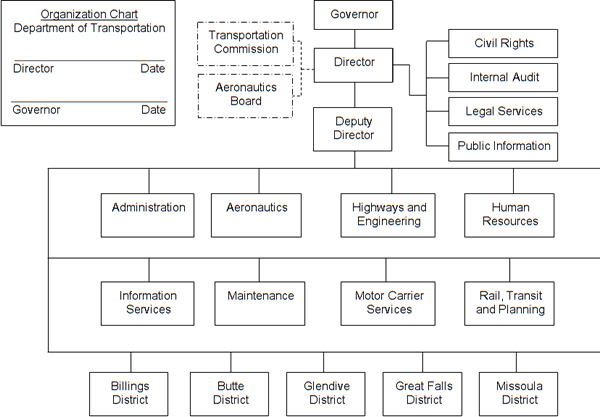
ADMINISTRATION DIVISION
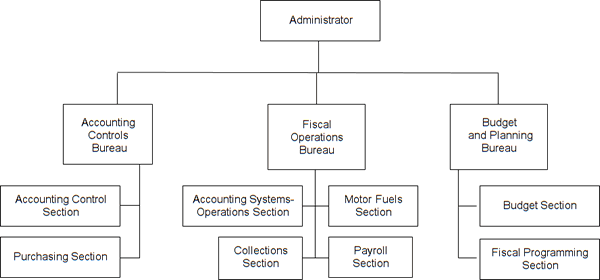
AERONAUTICS DIVISION
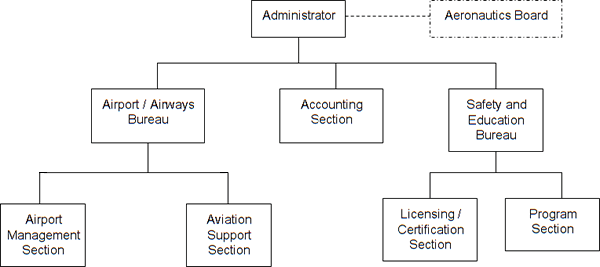
HIGHWAYS AND ENGINEERING DIVISION
HUMAN RESOURCES DIVISION
INFORMATION SERVICES DIVISION
MAINTENANCE DIVISION
 MOTOR CARRIER SERVICES DIVISION
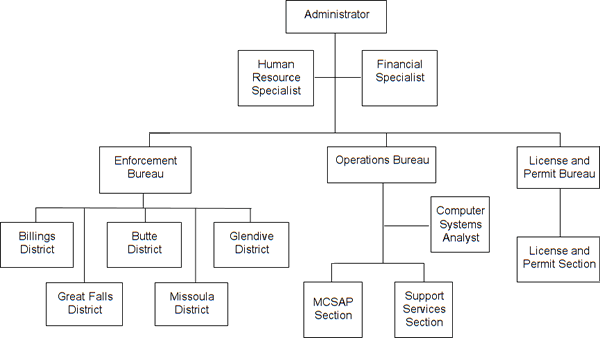
RAIL, TRANSIT & PLANNING DIVISION
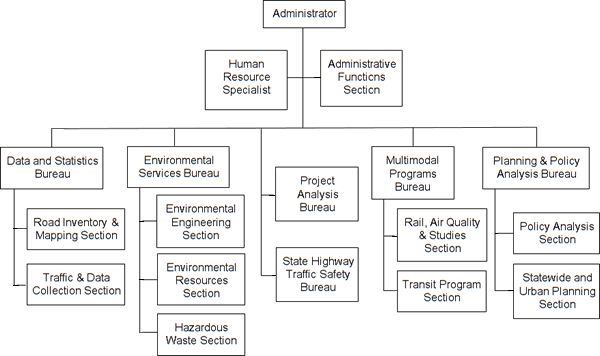 BILLINGS DISTRICT
 BUTTE DISTRICT
 GLENDIVE DISTRICT
 GREAT FALLS DISTRICT
MISSOULA DISTRICT
History: 2-4-201, MCA; IMP, 2-15-112, MCA; Eff. 12/31/72; AMD, Eff. 6/4/74; AMD, Eff. 12/4/74; AMD, Eff. 7/2/79; AMD, Eff. 3/31/82; AMD, Eff. 3/31/84; AMD, Eff. 3/31/86; AMD, Eff. 3/31/87; AMD, Eff. 3/31/88; AMD, Eff. 6/30/89; AMD, Eff. 3/31/91; AMD, Eff. 4/1/96; AMD, Eff. 10/8/99; AMD, Eff. 9/30/04; AMD, Eff. 12/31/06; AMD, Eff. 3/31/08; AMD, Eff. 9/30/09; AMD, Eff. 3/31/12. |
A directory of state agencies is available online at http://www.mt.gov/govt/agencylisting.asp.
For questions about the organization of the ARM or this web site, contact [email protected].
